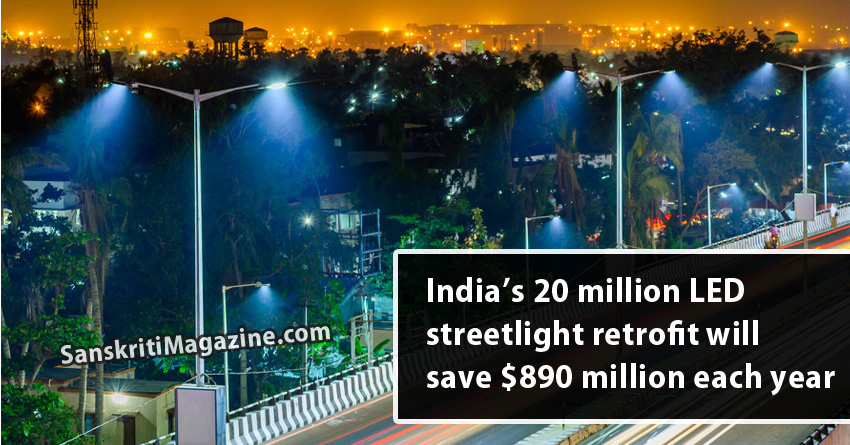India’s government announced a major commitment to energy efficiency earlier this year when the Domestic Efficient Lighting Programme (DELP) was launched, calling for 20 million lightbulbs in streetlights to be replaced with LED bulbs. The largest project of its kind, the upgrades will take about two years to complete, and comprise part of a larger effort to reduce the national power load and save hundreds of millions of dollars a year.
The retrofit project is expected to cost around Rs 2,500 crore ($385 million), but just like investing in LED lighting for one’s home, there is a long-term cost-savings to be realized. LED bulbs have a much longer life span, lasting an average of 50,000 hours, while a halogen lightbulb might only last 1,000-2,000 hours. In addition to saving money on the light bulbs themselves, switching to longer lasting bulbs reduces labor, since they need changing much less frequently. With 20 million bulbs earmarked for replacement, India is hoping to reduce the annual power load by 10.5 billion kWh, translating into a financial savings of Rs 5,775 crore ($890 million) each year.
India’s streetlight LED upgrade project could easily be the biggest streetlight retrofit in the world, surpassing Los Angeles’ retrofit of just 210,000 streetlights in a two-phase process. The massive project is just one arm of India’s journey toward energy efficiency. In addition to the public streetlight upgrades, the Indian government is launching a subsidy program to make LEDs more accessible for homeowners as well, allowing them to purchase LED bulbs at a below-market cost. The Prime Minister Modi has also issued instructions to all central government departments to replace existing lighting with energy efficient systems, and to set up rooftop solar panels. The Presidential Palace is already outfitted with a solar power system, and several ministers and members of Parliament are working to get off-grid solar power set up in villages across India.











